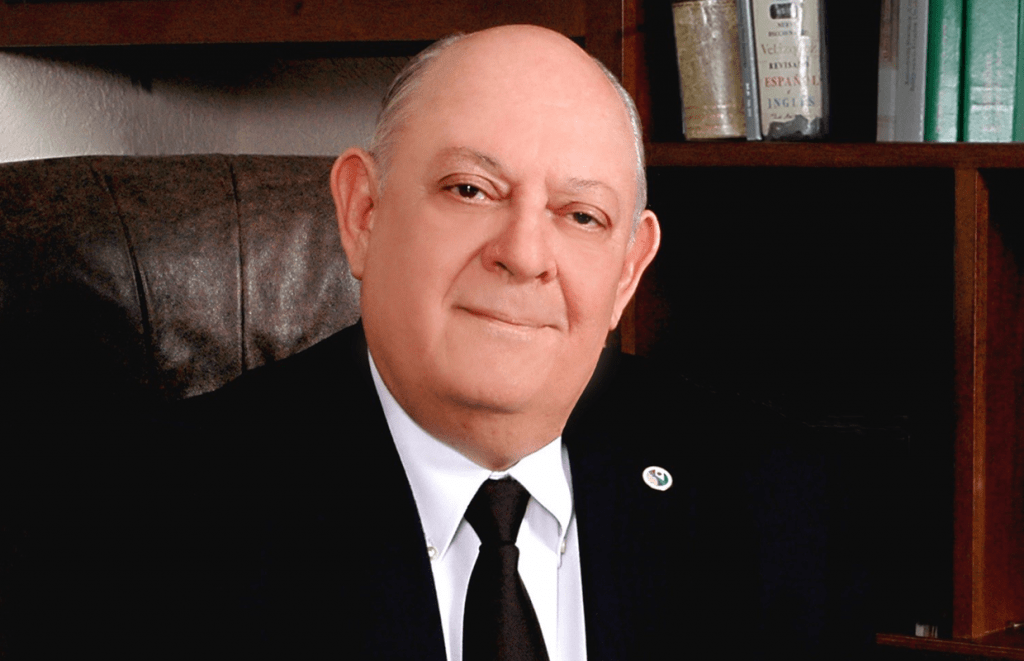Commissioner of the International Boundary and Water Commission, United States and Mexico
In this issue’s Q&A, Texas+Water Editor-in-Chief, Dr. Todd Votteler, interviews Roberto F. Salmón Castelo, Mexican Commissioner for the International Boundary and Water Commission (Comisión Internacional de Limites y Aguas, CILA).
 Commissioner Castelo has a wide range of experience in hydraulic projects. He was Northwest Regional Manager of the National Water Commission (CONAGUA) from 2002 to 2006 and from then until 2008 he served as General Manager of the Northwest Basin Unit based in Hermosillo, Sonora. Additionally, Commissioner Castelo was Planning and Special Projects Director for the Sonora Center for Research and Development in Natural Resources and has remained a partner in a variety of companies that carry out basin management projects and environmental studies. He has a Bachelor of Science in Agriculture from the University of Arizona, where he also received a Master of Science degree in the same field. Additionally, he is doing advanced studies in Water Resource Administration at the University of Arizona and is currently a candidate for a doctoral degree there.
Commissioner Castelo has a wide range of experience in hydraulic projects. He was Northwest Regional Manager of the National Water Commission (CONAGUA) from 2002 to 2006 and from then until 2008 he served as General Manager of the Northwest Basin Unit based in Hermosillo, Sonora. Additionally, Commissioner Castelo was Planning and Special Projects Director for the Sonora Center for Research and Development in Natural Resources and has remained a partner in a variety of companies that carry out basin management projects and environmental studies. He has a Bachelor of Science in Agriculture from the University of Arizona, where he also received a Master of Science degree in the same field. Additionally, he is doing advanced studies in Water Resource Administration at the University of Arizona and is currently a candidate for a doctoral degree there.
Established in 1889, the International Boundary and Water Commission (IBWC) has responsibility for applying the boundary and water treaties between the United States and Mexico and settling differences that may arise in their application. The IBWC is an international body composed of the United States Section and the Mexican Section, each headed by an Engineer-Commissioner appointed by his/her respective President. Each section is administered independently of the other. The United States Section of the International Boundary and Water Commission (USIBWC) is a federal government agency and is headquartered in El Paso, Texas. The IBWC operates under the foreign policy guidance of the U.S. Department of State. The Mexican Section is under the administrative supervision of the Mexican Ministry of Foreign Affairs and is headquartered in Ciudad Juarez, Chihuahua, Mexico.
How has the IBWC changed during your tenure as Commissioner and what accomplishments during that time do you consider to be the most significant?
- We are more open to the public, more engaged with stakeholders.
- We are having more contact with local people, we have created Citizen’s Forums in every border city where we have an office (Tijuana, Mexicali, Nogales, Cd. Juárez, Cd. Acuña, Nuevo Laredo, and Reynosa).
- We have strengthened our ties with universities and research centers.
- We have concluded five relevant agreements to address scarcity of water and low reservoir storage in the Colorado River Basin.
Will Mexico’s top priorities for the IBWC change under the new President, Andrés Manuel López Obrador?
No. Priorities remain the same.
Currently, there is very little in the 1944 Treaty that discusses how groundwater resources should be allocated between Mexico and the United States. Do you think Minute 242 gives IBWC the scope to negotiate groundwater-sharing issues in the future?
Minute 242 certainly mentions a groundwater agreement in the future. Meanwhile, the Commission has continued with technical studies and consultations regarding the main aquifers along our common border; exchanging information, modeling their physical behavior and keeping meetings on a regular basis.
We just celebrated at El Paso, a Binational Summit oriented exclusively to trans-boundary aquifers shared between Mexico and the US, aimed at understanding the physical, administrative, and legal challenges that both countries will have to face in order to have a fair use of those waters in the benefit of the two countries.
Now that you are meeting with U.S. IBWC Commissioner Jayne Harkins what are some of the areas of common interest that have emerged?
- Sanitation issues along the border are right now at the top of the Commission´s agenda.
- Issues in the Colorado and Rio Grande Rivers continue to be regular topics of discussion in our regular meetings.
What do you consider to be the biggest challenge(s) facing Mexico and the United States over the next 20 years regarding the water resources that we share?
- Keeping the 1944 Treaty current, which can be accomplished by the use of “Minutes,” a tool provided by the Treaty to address situations that were not foreseen at the time the Treaty was signed.
- Understanding Climate Change and how it affects the international basins.
*Click here to read Texas+Water’s March Q&A with Jayne Harkins, U.S. Commissioner of the International Boundary and Water Commission.

